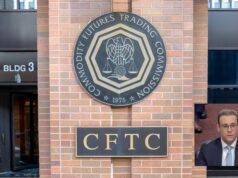In a dramatic turn of events, creditors of the collapsed cryptocurrency exchange FTX have been left fuming following revelations that the reorganization plan they had overwhelmingly supported was modified after the vote. The newly disclosed changes, which set aside $230 million for certain shareholders, have ignited outrage among creditors. Many are already grappling with the reality of recovering only a fraction of their original claims. They now question the fairness of the process, feeling blindsided by what they describe as a betrayal of their expectations.
A Plan Initially Backed by Creditors
In the wake of FTX’s historic collapse, the company put forth a reorganization plan to manage the fallout from its bankruptcy and address the financial damage caused to millions of creditors. More than 94% of FTX creditors voted in favor of the plan. The process was initially hailed as a step toward recovery. Creditors were cautiously optimistic that the reorganization would facilitate the return of some portion of their lost funds. They expected some repayments in crypto. Overall, the plan seemed to offer a glimmer of hope to those impacted by the massive insolvency.
However, that optimism quickly faded when details of post-vote changes to the repayment structure surfaced. Many creditors were already bracing for reduced payouts. But they were stunned to learn that the newly adjusted plan set aside a whopping $230 million for a group of shareholders. This modification, made after the creditors had cast their votes, has left many feeling deceived.
The Controversial $230 Million Set-Aside
One of the most contentious aspects of the revised plan is the allocation of $230 million to certain FTX shareholders. Creditors argue that equity holders, particularly those who benefited from FTX’s operations before its collapse, should not be prioritized. They believe those who lost funds directly in the exchange’s downfall deserve priority. It is not uncommon for shareholders to receive some portion of remaining assets in a bankruptcy. However, the size of the allocation and the fact that it came to light after the vote has sparked significant backlash.
“We were led to believe that this process was about restoring what we lost,” said one creditor, who wished to remain anonymous. “Now it feels like the people at the top are walking away with more, while we’re left with the scraps.”
Lower-than-Expected Payouts for Creditors
Another point of frustration is the revelation that creditors may only receive 10-15% of their claims in cryptocurrency. That is far less than what many had hoped for. Initial projections and communications had suggested more favorable returns, further fueling the sense of betrayal among creditors. The revised repayment structure now leaves many feeling that the recovery process has become skewed in favor of shareholders at the expense of those hardest hit by FTX’s collapse.
For many creditors, these changes are particularly painful given the volatile nature of the cryptocurrency market. With the value of digital assets fluctuating wildly, even a small percentage difference in payouts could have a significant impact on what creditors ultimately recover. Moreover, the market’s reaction to the restructuring plan, including a sharp rally in the price of FTX’s native token (FTT), has raised concerns among some creditors. They feel excluded from potential market-driven recoveries.
>>> Read more: FTX Bankruptcy: Are Customers Truly Getting Full Repayment?
Accusations of Mismanagement and Miscommunication
The revelation of these post-vote changes has led to widespread accusations of mismanagement and a lack of transparency in the restructuring process. Creditors voiced concerns that they were not properly informed about the possibility of shareholder payouts before casting their votes. This lack of clarity has undermined the trust many had in the process. It left creditors feeling “scammed twice” and some questioned the motivations behind the changes.
“They dangled the promise of crypto repayment in front of us, only to change the terms when it was too late,” said another creditor. “This was never about fairness—this was about protecting insiders.”
FTX’s restructuring team has yet to issue a comprehensive statement addressing the backlash. However, legal experts have already noted that the controversy could implicate the ongoing bankruptcy proceedings. If creditors continue to express dissatisfaction and pursue legal challenges, the reorganization process could face further delays, prolonging the uncertainty for all parties involved.
The Road Ahead
As the fallout from the FTX collapse continues unfolding, the reorganization plan remains a key focal point for creditors, shareholders, and the broader cryptocurrency community. While the plan may provide some relief, the post-vote changes have left a bitter taste for many creditors. They were already navigating the complex and emotionally charged process of financial recovery.
The allocation of $230 million to shareholders has exacerbated the perception that the restructuring is not being carried out in the best interests of those most affected by FTX’s downfall. As the debate over fairness and transparency rages on, one thing is clear: the resolution of FTX’s bankruptcy is far from straightforward, and the process will likely face further scrutiny in the months ahead.
>>> Read more: Crypto Industry Slams SEC Over FTX Stablecoin Repayment Plan
The anger and disillusionment of FTX’s creditors illustrate the broader challenges arising in the aftermath of large-scale cryptocurrency failures. The decision to prioritize shareholder payouts at the expense of creditors has exposed fault lines in the reorganization process. Many question whether true justice can be achieved in such a complex and highly volatile financial landscape. For now, creditors will have to wait and see how their legal battles unfold and whether the restructuring plan will ultimately provide the restitution they seek.
Readers’ frequently asked questions
Why did FTX prioritize shareholders over creditors after the vote?
The decision to set aside $230 million for certain shareholders after the vote has caused significant frustration among creditors. In bankruptcy cases, equity holders, including shareholders, are typically lower in priority compared to creditors. However, FTX’s post-vote changes included this shareholder payout. Many perceive it as unjust, given that creditors lost substantial funds in the collapse. So far, the FTX reorganization team has not provided any detailed public explanation. The payout may be tied to specific legal obligations or settlement terms not disclosed beforehand. Such obligations may involve claims from key shareholders or stakeholders who had a legal right to a portion of the estate’s remaining assets. Nevertheless, the decision has been controversial. It appears to undermine the principle that creditors should be prioritized in such restructuring cases. It left them questioning whether they received fair treatment in the final resolution.
How will the $230 million shareholder payout affect the amount FTX creditors will receive?
The allocation of $230 million to shareholders does have a direct impact on the funds available to repay creditors. Essentially, this payout reduces the pool of assets that would otherwise be used to reimburse those who lost money in the collapse. Since the bankruptcy estate is a limited resource, any significant payout to shareholders inevitably shrinks the remaining funds available to creditors. This means that creditors may receive less than initially expected. Although creditors were originally projected to recover 10-25% of their claims in crypto assets, the new shareholder allocation raises concerns that the actual percentage could drop further. The lack of clarity and transparency surrounding this change has compounded creditors’ fears of an even smaller recovery, making them feel sidelined in favor of shareholders.
Is there any recourse for creditors who feel misled by the post-vote changes?
Creditors who feel misled by the post-vote changes may seek legal recourse, though this is likely a complicated and time-consuming process. In bankruptcy cases, creditors can challenge the reorganization plan or specific aspects of it. Legal channels are available if they believe the process was unjust or that they were misinformed. This could raise objections in court to request a review of the terms or pursue other legal remedies. However, creditors would need to demonstrate that they were not properly informed about the changes before the vote or that the modifications violate bankruptcy laws or procedural fairness. Given the complexity of FTX’s bankruptcy and the legal intricacies involved, it remains unclear whether such challenges would succeed. They could also potentially delay the repayment process even further. For now, creditors must carefully assess their options and potentially collaborate with legal experts to evaluate any possible actions.
What Is In It For You? Action Items You Might Want to Consider
Monitor FTT Price Movements Closely
With the ongoing controversy surrounding FTX’s reorganization and the unexpected FTT token rally, it’s critical to keep a close watch on market movements for FTT. Speculative trading around bankruptcy news can create short-term opportunities, but these rallies can be volatile. If you’re holding FTT or considering it, set clear exit points. Stay informed on further updates that might affect its value.
Diversify Your Crypto Holdings
The FTX situation serves as a reminder that even well-established exchanges can face sudden collapse, impacting traders and creditors alike. Consider diversifying your holdings across multiple exchanges and wallets to safeguard your portfolio. Decentralized finance (DeFi) platforms and cold storage solutions can offer alternatives to holding assets on centralized exchanges. They reduce the risk of exposure to exchange insolvencies.
Stay Informed About Bankruptcy Procedures
If you’re trading on centralized exchanges or holding assets tied to companies facing legal or financial trouble, it’s essential to understand the bankruptcy process. This knowledge is crucial because it can impact asset recovery. Knowing how creditor repayment works, and the priority of payouts (creditors vs. shareholders), will help you make informed decisions. This understanding can guide whether to hold or liquidate your positions when warning signs appear.











[…] tokens held by the bankrupt FTX estate. This sale, which aims to liquidate the tokens as part of FTX’s bankruptcy proceedings, could further depress WLD prices by flooding the market with a large supply of tokens. The […]
[…] >>> Read more: FTX Creditors Outraged by Post-Vote Changes […]